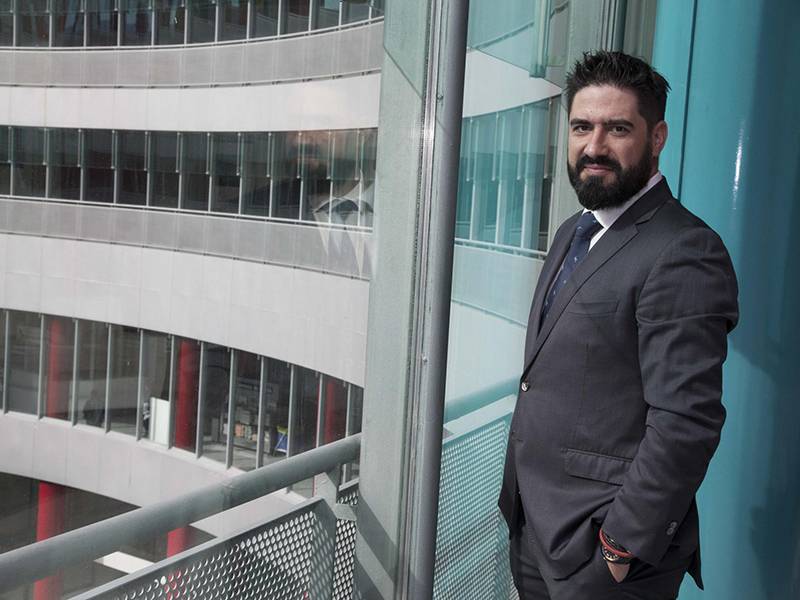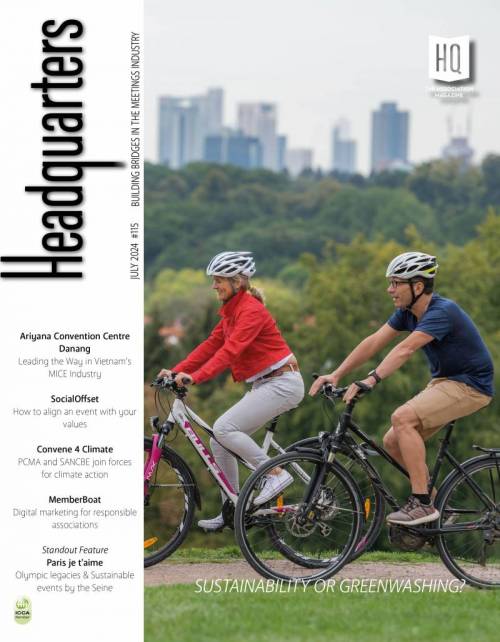Virtual Trade Shows and Events: Technology at the Service of Face-to-Face

Boosted and accelerated by the pandemic, virtualisation has been one of the great adaptations that the event industry has seen in recent months. Beyond taking face-to-face meetings online, the organisation of virtual events and trade shows implies a transformation when it comes to planning, marketing, convening and making a professional meeting profitable. In line with the strategic digitisation process that IFEMA MADRID is carrying out and based on its experience of implementing the LIVEConnect technology platform as a key element for the digitisation of its trade shows in the last year, Raúl Calleja, director of professional events and business digitalisation at IFEMA MADRID (cover photo), gives us a few keys to successfully organize virtual and hybrid events.
Digitising the features of a trade show
When we talk about virtual events, they usually include hybrid events, but for trade show activity, we should differentiate between the virtualisation of a trade show and its hybridisation.
“These are two different concepts: hybridisation has to do with technological solutions that enrich the value proposition of face-to-face, offering through technology a series of functionalities that provide a different and complementary experience to the show. On the other hand, virtualisation occurs during the rest of the year. The concept of trade show has a series of attributes which are intrinsic to face-to-face connections and cannot be 100% virtualised; for this reason IFEMA MADRID has made efforts not to digitise a show in itself, but rather to digitise its various functionalities, such as networking, access to leads that you cannot get in a traditional face-to-face event, the content, the novelties, or the branding and visibility of the participating companies, as well as sessions that can be held in the digital realm. This is what LIVE Connect allows: to complement and enrich the face-to-face part of a trade show, reinforcing its brand value. The face-to-face meeting and interaction continue to be the core of the fair, but a digital component extends the life of the event to 365 days a year."
Measurement and data from the entire community of an industry
Another advantage that this digital dimension provides is the addition in the event environment of the data of an entire industry community. In a face-to-face event, we talk of a number of visitors, but we usually do not know exactly how many have passed by a given stand, how many have stopped to ask about an exhibitor or if there has been an exchange of leads. Technology allows us to offer added value to the face-to-face part of the event by monitoring how many meetings a visitor holds, how many contact requests an exhibitor has received, how many messages they have exchanged, etc.
In addition to statistics and measurement, in a digital environment the exhibitor has access to a whole community of possible leads, regardless of whether or not they have passed by the stand. "It is an added value that allows us to create a permanent professional community over time, encouraging brands and exhibitors to work throughout the year on a platform, being more effective in finding and capturing leads, organising sessions, networking with an audience, under an ecosystem of supply and demand that has been gathering around the brand of the fair”.
Challenges to consider before digitising a trade show
"All industries have some elements that can be digitised, but it is true that there are some attributes that can make the implementation of this digitisation easier, for example, at trade shows for industries that sell products, which work better than those of services; likewise, B2B is easier than B2C”. In addition, other components must be taken into account such as the buyer persona of a fair: if it is aimed at a younger age profile or technology-intensive sector, it will be easier. Also, it will be easier if the brand has a marketing department that manages its presence on the show.
On the other hand, the trade show organiser has to consider that digital environments have entry and exit barriers. “You cannot change technological platform every year, because it requires an effort from the user to become familiar with the environment and usability. For this reason, we must be very rigorous when choosing the technology to be implemented since we are very dependent on the technology, the software and its capabilities”. It is necessary to be clear about what functionalities you want to digitise and offer on the platform (networking, automatic matching or simply collecting an advanced directory of exhibitors). And based on that, go to the market and see what platforms offer those features, which is customizable and can be adapted to the branding of the trade show… besides guaranteeing technical support and support from the developer.
How the digitisation of trade shows will evolve
Undoubtedly, these months of pandemic have been a time of learning and acceleration of the virtual dimension of fairs. “At first, organisers have had to turn to software platform developers that were already on the market, which were not necessarily specifically designed for professional trade show organisers. Here the path will be an alliance between developers and show organisers to build the software based on the specific needs of each event”.
There will be more opportunity in the digital field for events or brands that are more relevant. “A small event will be difficult to virtualise because there will be no critical mass to generate community. Relevance and reference in terms of content and volume of community, exhibition offer and networking, are the key to creating communities of value. If this is relevant, there will be room for digitisation”.
In addition, a new dimension arises in fairs: that of digital technical secretariat. There needs to be a profile that helps exhibitors to configure their online presence, parameterize the matching between supply and demand, etc. A profile that knows how to handle technology and that the organiser needs. In the same way, the role of dynamiser of the platform is also new. “In person, once the fair starts, the organiser gets to the background, but in a digital environment you have to be constantly energising. This new role of dynamiser and generator of content for the fair organiser cannot be left to the dynamics of supply and demand”.
Other Articles
About Us
Supported by the Union of International Associations (UIA), the International Association of Professional Congress Organisers (IAPCO) and the Interel Group, the global public affairs and association management consultancy, Headquarters Magazines serve the needs of international associations organising worldwide congresses.














